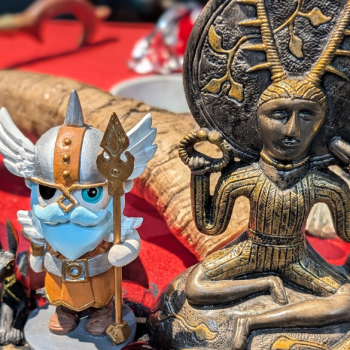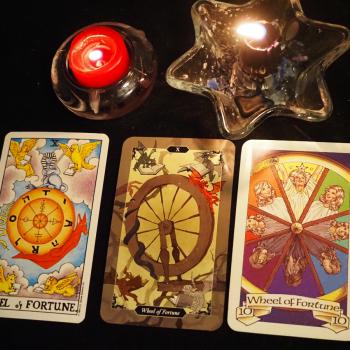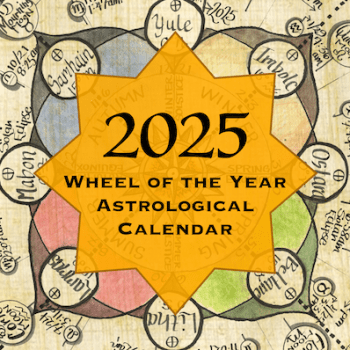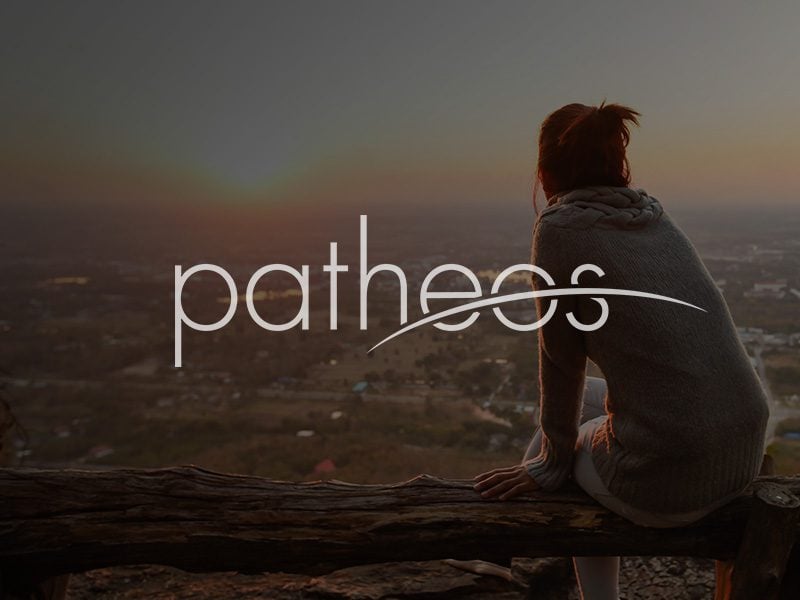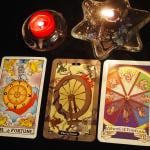Loki in Contemporary American Heathenry

While Loki remains an ambivalent figure at best to the scholarly community, the response to him within modern Heathenry and Asatru has been no less dichotic. Worship of Loki forms one of the predominant ideological fault lines within the American Heathen community and one of the most hotly contested. It should be noted that this article deals only with the American Heathen community. Only American Heathens were interviewed for this research and the author makes no claims concerning the nature of European or Icelandic Heathenry.
Heathenry is a Reconstructionist religion. This essentially means that practitioners strive to recreate their religion as it existed prior to the insurgence of Christianity. Historical accuracy in rites and rituals and in one’s approach to the Gods is of the utmost importance to Reconstructionists. There are many other Reconstructionist religions than Heathenry. While Heathenry draws its cultural and religious impetus from Northern Europe, modern Hellenismos does the same with ancient Greece, as does Orthodox Kemeticism with ancient Egyptian culture and religion for instance. One factor that every Reconstructionist religion has in common is the importance they give to what in the Northern Tradition is commonly termed “the lore.” Within Heathenry, this lore is comprised of the Eddas, the Sagas, Anglo Saxon medical charms, and any and all surviving historical texts. Added to this is a plethora of modern scholarly research, linguistic analysis and anthropological study. It is from this body of work, none of which was ever intended to be utilized as religious sources, that Heathen rituals have been reconstructed and from which modern Heathens draw their dominant approach to the Gods.
No other God or Goddess evokes such a heated response amongst Heathens. Four people interviewed for this article actually felt they had been driven out of the Heathen community because of their worship of Loki and one dedicated Loki’s-woman, living in Colorado, received death threats from local community. (personal correspondence with E. Vongvisith). This, however, is extreme. The majority of mainstream Asatruar tend to view Loki with a mixture of respect and wariness. Diana Paxson, a well known Heathen author writes in her book Essential Asatru that:
If you want to start a “spirited” discussion among Heathens, ask whether Loki should be honored in ritual. Some, in particular those who follow the Theodish traditions, abhor him to the point where they will not allow his name to be mentioned in the hall. Others point out that he brings gifts as well as troubles and will hold a blot for him with cinnamon schnapps or peppered vodka in which you toss a dram into the fire each time you drink to him. However, you should bear in mind that Loki is a trickster, and unless you are experienced in dealing with chaotic forces, it might be better not to attract his attention. (Paxson, p. 72).
This is in stark contrast to Theodish belief which believes him to be a betrayer, liar and enemy of the Gods. (private correspondence with Casey Woods). In fact, this is the primary issue that Heathens have with Loki: according to the Eddas, he rises up against the Gods at Ragnarok. Many cannot reconcile honor and worship of Loki with honor and worship of the rest of the Aesir, despite the fact the Prose Edda clearly lists him amongst the Gods.
At the opposite end of the spectrum, there are some Heathens and Norse Pagans who focus their worship on the Jotnar. They often refer to themselves as “Rokkr” or “Rokkatru” from an Old Norse word for “twilight.” (Krasskova, p. 97). Many of these people claim experiences of Loki that stand in stark contrast to the image more conservative Heathens would present. There are even a growing number of women who have specifically devoted themselves to Loki as servants or spouses (something that has also occurred in modern Heathenry with Odin, Frey, and several other Gods). (Personal correspondence with E. Vongvisith). 2006 also saw the publication of the first book of devotional poetry focused around Loki, Elizabeth Vongvisith’s “Trickster, My Beloved.” Needless to say, those who claim to be Rokkatru or who otherwise devote themselves to Loki and his kin are not often welcomed within mainstream Heathenry.
Those who are exploring Northern Tradition neo-shamanism, often work extensively with Loki and his kin and this has aroused much controversy and hostility within Heathenry. Books like Raven Kaldera’s “Jotunbok: Working with the Giants of the Northern Tradition,” which present the Jotnar in a positive light, are often met with vitriol. Mr. Kaldera refers to Loki as “The most infamous Jotun of all.” (Kaldera, p. 251). Casey Woods, a tribalist Heathen and scholar describes the conundrum that Loki poses for the average Heathen:
In modern day reconstructed Heathenry, Loki is a problematic God. The problem in dealing with Loki is something avoided by those Heathens who have reconstructed their practices from Anglo-Saxon sources, because the God does not appear in those sources. For all other Heathens, he is regarded in the following three ways:
1). As the highest villain, and a great abomination against society and the other Gods in Asgard. He should not be honored or even spoken of (especially during holy rites).
2). With a wary respect, only afforded as a means of insurance against either Loki or Odin’s wrath since Loki is Odin’s oath-brother, and it is rude to honor one and not the other. This wariness also comes from Heathens not knowing clearly how to treat this God, so they err on the side of caution somewhere in the middle between the two extremes.
3). Greatly honored and loved. For those few who honor and love Loki, and use not their devotion of him as an excuse for improper behavior, they love him whole-heartedly – although Heathens who view him in this regard, clearly acknowledge that he is a difficult God to work with, because he will not allow them to stagnate, but rather will prod them to new growths and understanding. (personal correspondence with Casey Woods).
Followers of Loki point out that he has more stories in the Norse lore than almost any other Deity and those stories would be the poorer were he to be removed from them. They also often favor the triumvirate of Odin, Hoenir and Loki. Some, existing as they do within the liminal places of their own religious communities (either for their work within northern tradition shamanism, which is also controversial in American Heathenry, or because they violate gender or sexual taboos, or because they have been forced out of mainstream Heathenry for their work with the Jotnar) look to Loki as a role model, noting that
Almost every society has been forced to create two ethical systems – an ideal one and a practical one. Pre-Christian Northern Europe was no exception. They had a warrior code of ethics which placed a high premium on honor and honesty: without that, their civilization would soon have descended into anarchy…and yet because they lived in a harsh and violent world, they were sometimes forced to do dishonorable things to survive. Loki’s treachery is more often than not reserved for the enemies of Asgard…Loki brings Asgard some of its most precious treasures, but often he brings them at the price of honor. (private correspondence with K. Filan).
In this respect, Loki’s role becomes analogous to his role in the Loka Tattur: he is again receiving ownership over those that fall outside the boundaries of the other ordered powers. He is the God that governs all those things that fit nowhere else. (Personal communication with S. Reicher).
It is not surprising that a Reconstructionist religion like contemporary Heathenry would find Loki’s nature troublesome. Heathenry is a very conservative religion, as Reconstructionist religions tend to be. They approach the Gods with the wish that their communities should be unchanging. They look to a reified vision of the past to craft their religion and religious community in the modern day. Whereas the more liberal denominations and Norse Paganism, utilize the surviving stories and lore to enhance a spirituality based on their own personal experiences, the traditionalists do not do this. They utilize lore to at best define, and at worse confine their religious life. Loki in many respects embodies the principle of change with all its attendant chaos and messiness. In a religion dedicated to preserving and restoring the past, it is not surprising to find that his influence is often less than welcome. Yet this author cannot help but ask what is lost by the rabid exclusion of such a being. Along with change, the stories about Loki demonstrate a creative force and drive without which the tales of the Gods would be dull indeed. For a religion that must balance a dedication to the past with the realities of surviving and evolving in the modern world, it seems that Loki, with his skill at navigating the knife edge precipices between uncertainties would be more needed than ever.
Loki is loved and Loki is hated within Heathenry. He commands intense respect and loyalty from those who follow Him and yet to others within the same religion, he is regarded as the “arch enemy,” a fiend and betrayer of the Gods. Scholars find him equally difficult to pin down and he remains both a controversial figure and a fascinating one. Whether he is viewed as villain or trickster, worthy of honor or deserving only hostility, his presence in the Eddas certainly ensures that the Gods and the worlds they crossed are anything but static. With Loki in their midst, to scholars and devotees alike, the stories contained in the Eddas can never be frozen or immobile. Rather, they retain the ability to capture the imagination, fire the heart of spiritual devotion and spur, in a manner which would do Loki proud, conflict, controversy, debate and evolution.
Sources:
- Babcock-Abrahams, Barbara, (1975). A Tolerated Margin of Mess: The Trickster and His Tales Reconsidered. Journal of the Folklore Institute, vol. 11, #3, pp. 147-186.
- Balme, Maurice, et al. (2003). Athenaze: An Introduction to Ancient Greek. New York: Oxford University Press.
- Bellows, Henry (translator) (1926). The Poetic Edda. New York: The American Scandinavian Foundation.
- Cawley, Frank Stanton, (1939). The Figure of Loki in Germanic Mythology. Retrieved October 2006 from http://links.jstor.org/sici?sici=0017-8160%28193910%2932%3A4%3C309%3ATFOLIG%3E2.0.CO%3B2-L
- Ellis Davidson, H.R. (1964). Gods and Myths of Northern Europe. New York: Penguin Books.
- Davis, Erik, (1991). Trickster at the Crossroads. Gnosis Magazine, Spring #19
- de Vries, Jan, (1933). The Problem of Loki. Helsinki: Suomalainen Tiedeakatemia Societas Scientiarum Fennica.
- Dumezil, Georges, (1986). Loki. France: Flammarion.
- Guerber, H.A. (1994). The Norsemen. UK: Senate Publishing Company.
- Hyde, Lewis, (1998). Trickster Makes the World. New York: North Point Press.
- Kaldera, Raven, (2006). Jotunbok: Working with the Giants of the Northern Tradition. MA: Asphodel Press.
- Krasskova, Galina (2005). Exploring the Northern Tradition. New Jersey: New Page Books.
- MacCulloch, John, (1964). Mythology of All Races, Vol. 2. New York: Cooper Square Publishers, Inc.
- Paden, William, (1994). Religious Worlds. Boston: Beacon Press.
- Paxson, Diana, (2006). Essential Asatru. New York: Citadel Press.
- Rooth, Anna Birgitta, (1961). Loki in Scandinavian Mythology. Lund: C.W.K. Gleerups Förlag.
- Sigurðsson, Gísli (translator), (1999). Eddukvaeði. Iceland: Mál og menning.
- Sorenson, Preben, (1983). The Unmanly Man: Concepts of Sexual Defamation in Early Northern Society. Denmark: Odense University Press.
- Simek, Rudolf, (2000). Dictionary of Northern Mythology. UK: DS Brewer.
- Weber, Erin, “Nanabozho and Hermes: A Look at the Persistence of the Trickster Archetype in Louise Erdrich’s Tracks and Thomas Mann’s Death in Venice (abstract). Accessed November 30, 2006 at http://72.14.253.104/search?q=cache:YKa8gQXaNm4J:honors.web.mtsu.edu/docs/Word%2520%26%2520Excel%2520Documents/Weber%2520(Erin)%2520Abstract%252006U.doc+Characteristics+of+Trickster&hl=en&gl=us&ct=clnk&cd=39.



